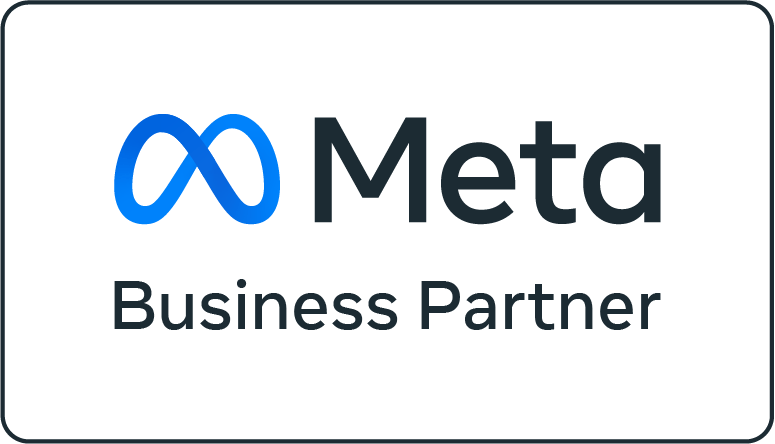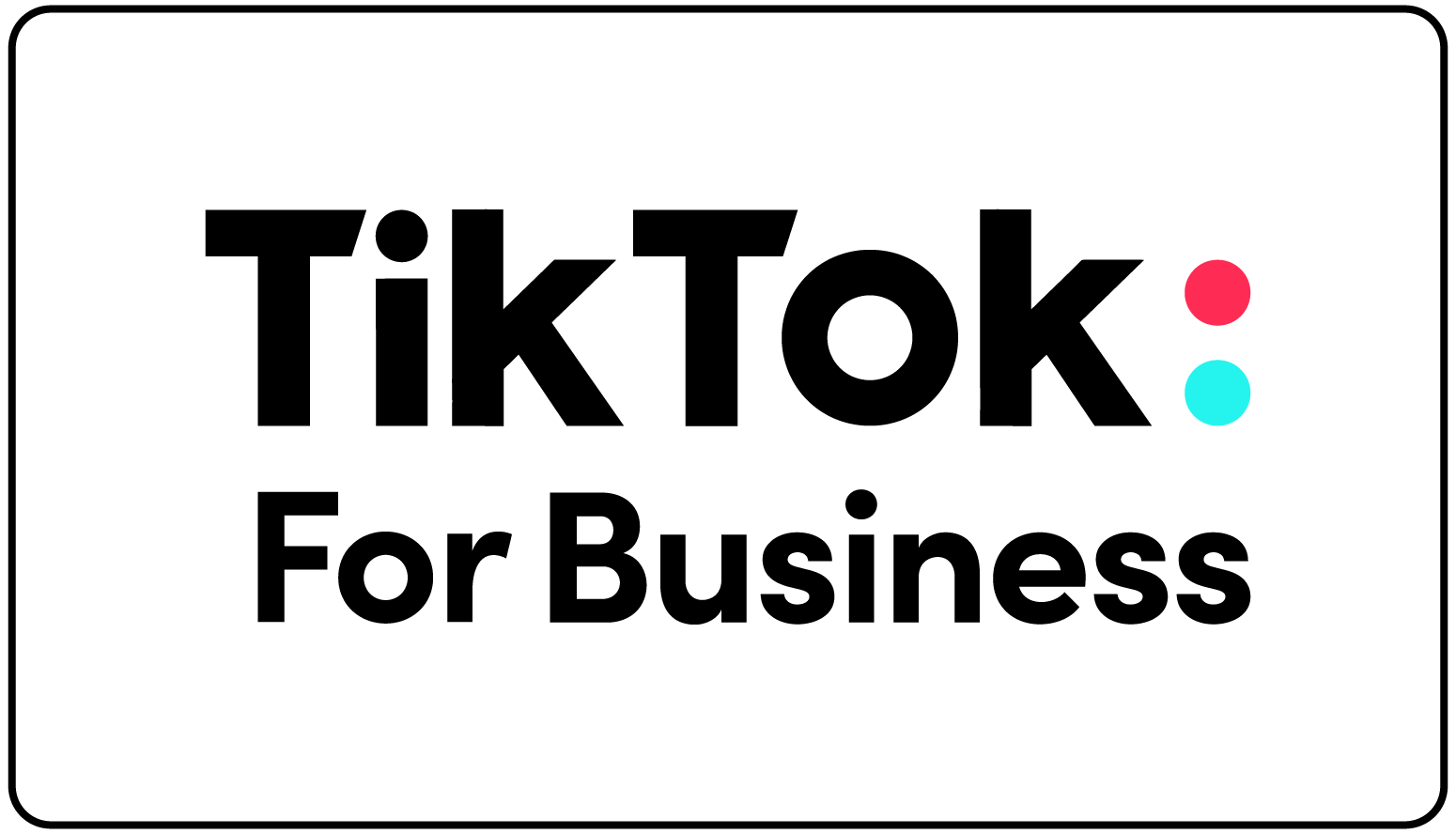[0:21] Intro
[1:30] Where do you begin developing a content strategy for a brand?
[5:34] How does it differ between different types of business?
[10:25] How do you decide what keywords you want to rank for?
[21:00] After doing the research on keywords, how do you switch to being a writer?
[23:30] The emotional creative journey.
[27:20] How do you define success after a post goes live?
[28:30] Final thoughts.
Chris: Hello everybody thanks for joining us and welcome to Matchcast.
Today we are very excited to be joined by Maddy Osman, Maddy is an SEO Content Strategist. She helps businesses grow traffic and sales with blogging. Maddy works freelance with a variety of different clients; she has a cool breadth of experience. She writes on her own blogs at the-blogsmith.com as well as Chicago Cheap Ass (links at the end).
We’re excited to have Maddy with us, Maddy thanks for joining.
Maddy: Thanks so much for inviting me, I’m excited to talk about our topics at hand for today.
Chris: Absolutely, fun, fun.
So the topic at hand is SEO strategy, and then we are going to try to, once we start at the high strategic level, we’re going to delve a little bit deeper into process and some details of how you go about delivering great value for your clients.
To start, we met at Content Jam which is a content marketing conference here in Chicago that our mutual friends at Orbit Media put on. Shout out to Orbit as usual, love them, everybody who comes across them and has the opportunity to get to know them, can really appreciate how helpful they are.
So following that thread, we appreciate having met you Maddy. Just to kick it off, where do you start when you have a would-be client or a client that’s agreed to work with you or just a blog that you’re starting. How do you decide and where do you begin when you’re developing that strategy?
Maddy: Yeah so I think that one of the things I start to think about, whether it’s in regards to blogging or social media. Because I like like to create, what are, different content themes. So different types of posts or articles that we’ll be talking about, so that there’s some level of strategy and consistency but also some diversity built into that strategy.
So maybe once a month we’re talking about, you know, maybe it’s something to do with employees, featuring them. Maybe once a month we’re talking about something super-hot topic for the industry right now. Maybe once a month there’s some more evergreen, like how-to content that makes sense no matter what part of the year it’s in. And then maybe another post or article has to do with something related to the month that we’re in, the holiday, or something like that.
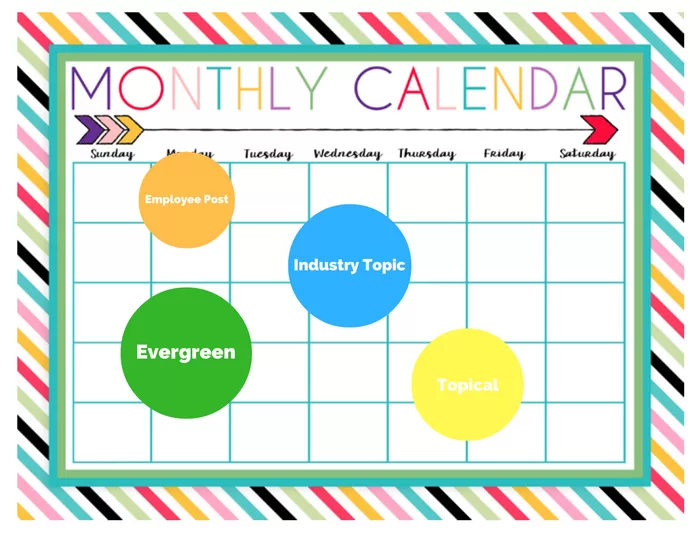
I think the first step is kind of defining what are the things you want to do throughout the month, or maybe even throughout the year. Creating some sort of content calendar of sorts to build in all these different things. And then from that kind of high level, themed out situation, getting a little more granular with what are the individual topics that would fit under these specific things.
Chris: Cool, where does the audience fit into that? Have you already determined who the audience is? Does the client tell you who the audience is? The theme I would have to assume would have to connect to the audience right?
Maddy: Oh absolutely. So when working with a client, again whether it’s social media or blogging, I usually have them fill out this sort of intake form and, I think as we go through this conversation, you’ll find the I am a huge proponent of having processes in place, creating templates and strategy. Things so you don’t have to reinvent the wheel every single time.
And so that you kind of have a directed conversation with the client or whoever you’re working with. So with regards to figuring out the audience, I think part of that is having sort of like a Facebook Ad strategy targeting approach about it. Things like, demographics, how old are they? What type of job do they tend to have? Where do they live, location wise? What are other types of brands and businesses they like or respond to?
You know, high level and low level details relating to those things. But then, when it comes to content I think another thing is you can’t always just guess. Especially if the brand is new, you’re just guessing about who the audience is if it’s new because it might end up being somebody totally different than what you’re forecasting it might be.
So part of that, too, might be going back into tools like Google Analytics and seeing how an audience actually does break down by location, by demographics, by interests and things like that. And Facebook and Instagram and Twitter can also provide a lot of that same data so you can kind of compare across your different social channels and online properties to determine if your guesses were, in fact, correct.
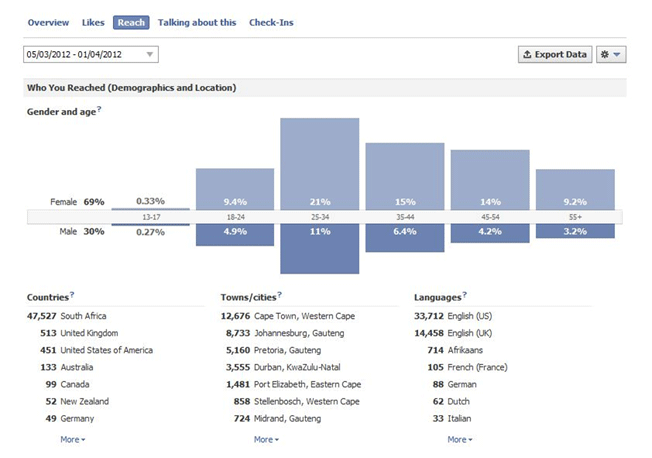
Chris: Cool, so you have a process in place, by which you have a group of questions that you ask every client at the beginning to get some of that qualitative information from their point of view of who they know it is or who they think it is, but then you’re going to supplement that with some quantitative, like looking into Facebook Ads – and that’s speaking our language. We’re Facebook Ads heavy firm for understanding what you mean by that, and the Google Analytics side, another source of figuring out who you’re speaking to before you start speaking to them.
Do any of these things differ if you’re talking to business-to-consumer business, or business that’s trying to attract other businesses?
Maddy: Oh totally, I mean the messaging ends up being totally different because with consumer audience you’re trying to get them to buy for just themselves or maybe someone in their family or a gift or whatever, but with a B2B audience you have a much larger pool of potential buyers and you have to kind of focus your messaging and content creation around knowing this fact that you’re not just trying to appeal to, maybe one decision maker, but many different types with all different levels of involvement in the buying process.
And inevitably the messaging is just different because of these different uses and these different audiences.
Chris: Yeah and the B2B stirs some of those decision makers might also even be, not necessarily in conflict with each other, but they might have very different emotional triggers or needs or priorities, so sometimes it can be challenging to kind of speak to all of them.
So once you have the strategy, the audience developed, you start with themes, and how many themes are appropriate for a client? Does it depend on how often you’re posting or how do you figure that out?
Maddy: Yeah, so I think maybe a good place to start is when I work with the brand on their blog and they’re either starting it from scratch or looking for some direction, I would say it makes sense to post anywhere from 1 and 4 times a month and it could be more than that. But the bare minimum, I would say, is once a month just to have this level of consistency so people know when they go to your blog and it’s been a month that they can see something new.
Also it’s a triggering factor to Google that you’re constantly providing up-to-date information and that Google should keep indexing your website and serving up those results to people.
So one is kind of my bare minimum, I prefer one a week, I think that’s better. Even two is getting in between where at least for the most part when people come back to visit your website there’s something there.
But I think with a brand that deals with more newsworthy content and trying to stay on top of trends and things like that, you know, maybe two a week is more what they have to aim for. So I think you have to base your themes around how often you’re posting. I mean it’s going to be largely industry dependent, too. I think I see a lot of blogs, a pet peeve of mine, is where they just focus on like, “Here’s a new product update” or something like that.
It’s just such a wasted opportunity. I think content like that belongs on a newsletter or on a social post or something like that. But a blog, at least in my eyes, the main purpose of the blog is to A) connect with the search engine and be able to rank for multiple keywords that your customers are using. But B) also to provide value to customers that helps win that trust over that makes them want to either purchase with you, use your software, whatever it might be.

So I think that using blog for purposes other than those by saying, “Hey here’s the new updates we have!” I don’t think that does a lot unless you’re something like Instagram where their updates are actually newsworthy.
Chris: That seems like something that’s written from the company’s point of view of what someone internal wants to say, rather than what the audience is interested in hearing.
Maddy: Yeah so it’s like if you’re going to go about and do that kind of an update post, what’s in it for me?, how is this going to change my life or change how I use this software, not just sort of the technical specifications.
Chris: Yeah, we had a bunch of people work on this feature so now there’s pressure to market it externally, even though we are talking about the feature, instead of how it might benefit our customers or clients.
Cool, and then so you’ve got a few things and it’s partially dependent on the industry and it’s partially dependent on how often you’re posting, it’s partially dependent on mixing things, you want some evergreen, you want some news worthy of the moment 2016 holiday ideas etc., which can get a lot of traffic, but you know it’s not going to get a lot of traffic in June 2017.
So those are always fun when they get dated and you get the view spike, but now it’s dead and does nothing for us anymore.
And mostly it sounds like you’re search engine driven which makes a lot of sense. Where do you start really doing a lot of research on the search engine trends on different competition levels for keywords, and how do you decide whether it’s at the theme level or at the post level, what keywords you want to rank for?
Maddy: Sure so I think a lot of mistakes that people make when creating content with that SEO focus is they focus so much on optimizing through the search engine that they ignore the fact that the final user is the reader and the reader is the person you’re wanting to convert either into a subscriber, buyer, advocate, whatever. So I think that the very first step is either asking your existing audience what are some things you’re struggling with related to fill in the blank industry.
Or by going to a website like Quora or, in the past, Yahoo Answers where people are, in real time, asking questions about things they are confused about. And so part of it is just looking for those questions, looking for trends within those questions. Another thing that I’ve heard that I really like is people that are using your contact form on your website to ask questions, that could be a really good data source for keywords and topics to use.
So once you kind of have an idea, that’s when you want to test it. So that’s when you go to something like Google Keyword Planner or some other keyword tool. Another one I really like is called Answer The Public. And it kind of takes a thought and completes it a little bit more. It suggests other things that people might type before or after the keyword you designate.
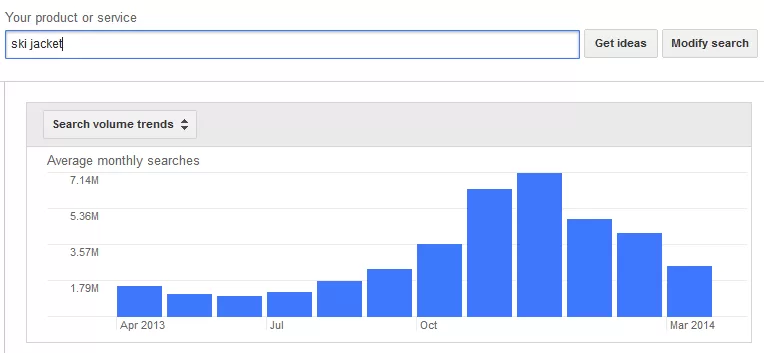
So that’s when you go to your preferred keyword tool of choice to determine if that’s something that people are actually searching for. But I think another common misconception when they’re actually testing out their keywords is something that has a huge search volume doesn’t necessarily mean that it is relevant search audience for your topic. So take the example of something that’s super generic like dresses or something. But you sell, let’s say Christmas dresses. Something holiday specific.
And so is that larger audience, people searching for dresses, going to care about your holiday dress post? Probably not, so you want to get a lot more granular than that. And then from there are they affordable dresses? Are they luxury dresses? Is it something they can buy online? Is it something they have to be in a certain location for?
So you have to take whatever the search volume is with a grain of salt, and from there when you’re looking at the competition level, whether it’s low medium or high. If it’s a high competition keyword and you know that Kohl’s is competing with you on that dress keyword, you’re probably not going to beat them.
So you might want to focus your efforts on the low or medium. Because I don’t think you should get too caught up in the numbers or the fact that it’s low or medium, as long as the people that you’re trying to optimize for, that you’re trying to target, are relevant customers.
It’s better to get 10 relevant customers than 100 irrelevant link clicks.
Chris: Absolutely, so, I’m hearing a couple things. One when you see some keyword that is related to your site but has giant traffic and high competition, you tend to get more specific instead of just holiday dresses, it’d be like, “Black holiday dresses in retail stores in Chicago”
So that’s one tip would be to try to find the long tail that connects to what’s going on your site. Maybe what you have for sale or what your business model is built around. Is that correct?
Maddy: Yeah, I think if you’re looking at keywords and you think you know what you want but you’re getting those high search volume, high competition results, then that’s definitely a sign that you need to get more granular until you get to that more ideal mix.
Chris: Cool, interesting. And then the other thing I was hearing you discuss when you’re talking about how you pick a topic was again combining the qualitative with the quantitative. Like you’re going and looking at Twitter, looking on Quora for discussions that are already happening so you can figure out what questions people are already asking and what they are talking about.
And then once you think you’re on the right track you go and kind of confirm that with some data on the couple tools that you mentioned which we’ll link to in the show notes.
Maddy: Yeah, like anything else in marketing it’s a process of guess and check. We think we know everything but until we actually combine that with data, it’s just a guess.
Chris: Yeah, absolutely. And then let’s say you’ve got the topic and you’ve got a post ready, do you start with the title? Once you have the idea, you’ve guessed and checked, and you’re like this is a good place to go with this, it fits our theme, it’s time to write this.
What kind of research goes into that part of it when you’re really starting to dig in, are you finding like semantically linked words, like I think you mentioned a tool, I want to link to it?
Maddy: Answer The Public, there are other ones too.
Chris: Yeah, so like Google does that too at the bottom of the search where it gives you related searches, is that the same idea?
Maddy: Yeah, so bringing back Orbit into the picture, Andy Crestodina has given a couple presentations about the different ways he optimizes his posts and I think one of his examples he always uses is he made a post about stuff you should put in a website footer. Which is kind of a dry topic but if you’re a web designer and you’re learning the ropes or trying to make the best damn footer you can, that’s probably a post you want to refer to. And so he kind of detailed that by creating this post, he did a lot of semantic search optimization where he used Google’s autocomplete, or tools like Answer The Public to figure out when people are searching for website footers what are some of the other topics that come up. What are the exact terms they are using to search for it?
And then to his post, not only did he try to optimize for whatever his main keyword was, he also made sure there were all these other semantically linked keywords which Google interpreted as making it a more in-depth resource. Obviously Google is changing all the time, but I think they are getting smarter than just keyword here, keyword there, ok cool, this post is a good resource for that.
It’s coming down to things like semantics, and like the other things you do besides keyword optimization, more favoring the user than the search engine. So I think that’s definitely one of the things I’m going to be more cognizant of as we move into 2017. And I do try with the posts I’m creating for my clients to try to write the keywords in a different way. Still optimizing for that main keyword, but making sure there are variations of it, at least the most popular variations.
Chris: Yeah, what other things, as long as you said 2017 and we’re talking about things that are not evergreen, what other things are you looking for as we go into 2017, or are you looking to do more of, just based on what you’re learning from people like Andy?
Maddy: Yeah, well one thing I do want to mention is the pop up situation. So you know when you go to the website and it’s like sign up for an email newsletter and the pop up is triggered right away. So that’s something that Google is going to really crack down on in 2017. I want to say it’s like February that people have been warned about. Don’t quote me on that, but it’s sometime early in the new year where they’re going to start penalizing different websites that automatically trigger that pop up.
So that said, there’s a bunch of different ways around it. One of them is making that pop up trigger later. Maybe 30 seconds in instead of 5. Another one is having some sort of welcome mat thing where it’s not a popup but you prominently display an email signup form on your homepage or something like that.
Another is the exit intent popup when someone goes towards the big red x on their browser or whatever and instead of having the pop up trigger after the fact. So there’s a lot of things with regards to pop ups you can do to kind of still have them so to say because I think they are really effective conversion tool. But for now Google is saying that the traditional application of them is something they will not support and, in fact, they will punish you for.
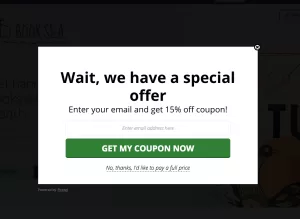
Chris: Yeah, we love pop ups but only when they’re used correctly, because if that’s the traditional application of that, I would argue they’ve been applied in a way that makes for a bad user experience because we do a lot of work with eCommerce sites and eCommerce fashion sites in particular, and so many of them are built on Shopify and so many of them have heard or know that this pop up is a good idea whether it’s a enter your email for a discount or whatever it might be but I really don’t like when I get to the site and it just immediately pops up.
And it’s often the site is a little slow, so the site hasn’t even loaded yet and they’re already asking me for my email address. It’s like, isn’t there something you’re supposed to be showing me about what you do and who you are and why I’m here?
I just met you and you’re asking me for my email address, give me thirty seconds, let me scroll around your page for a little bit. And I think even think thirty seconds might be a little bit too soon. I do like the exit intent pop up because, it’s kind of like, what do you have to lose at that point. But the timing of I don’t know, maybe multiple pages, if you go to a few pages and you’ve been on the site for 60 seconds, that’s kind of more my speed.
Maddy: Yeah, like a goal triggered pop up or something like that.
Chris: Yeah, exactly.
So you’ve done the research now, and I know you’re process oriented. So you’ve done the research now, you’ve got the topic you know what keyword you’re optimizing for, you’ve got a bunch of semantically linked phrases to your keyword that you know you want to include, I’ve seen Andy’s presentation on that where he literally writes out the words he wants to include and then crosses them off as he includes them.
Are there big pieces that you enjoy as a writer that know you get to dive in and kind of wordsmith and do your writing? Or how do you step away from a lot of this reverse engineering research to try to rank well and put your writer hat on.
Maddy: Yeah I mean, I think that it’s important to go into writing knowing what your target keyword is so you can seamlessly add it in as you go along and it creates less work at the end because I think one of my least favorite parts of doing SEO writing is if I don’t go in with the keyword that I want and then have to rewrite the content around that.
So I think that just by kind of knowing your purpose and going in with a plan, that makes the writing experience a lot more enjoyable. But another thing that makes it easier and this isn’t really SEO related, but more writing related, is coming in with an outline. So I think when I first started blog style writing I would kind of like maybe come up with a couple headings, but past that just kind of dive in and do my best to write that out, do my best to create an article that made sense.
But I found a lot more success by again creating a process, creating structure that guided what I would be writing about in a lot more detail. So you know, it’s not necessarily SEO related but just having a process for everything you do just makes everything kind of work better the first time around.
Chris: Yeah, then, if it’s the seventh time around and it still could work better you get to tweak your process and now you have an improved upon process. If you don’t have any process at all, it’s just like, oh this seems like a good idea to try, now I’ll try this and you may forget that this was the main difference and maybe it worked super well, and that could be a big finding that you might lose if you’re not process oriented.
Maddy: Exactly, and you have to document your processes as you find these things that help you be successful. So that in the future even if it takes you a little bit of time to create a structure around it, but that’s time saved over the long term if it’s something you do a lot.
C: Yeah cool, another kind of maybe slight change of pace, but it seems like you’re really passionate about this. And I’ve in a different life done some very creative making of things, and I saw a tweet once about the emotional creative journey that super resonated with me. How does it feel to you as you work through the beginning middle and end of a post?
Do you have like an arc that you feel like you go through? Or is it pretty much like you’re just delivering something and you kind of know where you’re going. Or do you have ups and downs as you’re developing?
Maddy: Kind of, So I think it’s kind of weird but I like to write the intro and conclusion first. I don’t really know why I don’t think I can put it into words, but maybe it just creates this sandwich of sorts for the rest of the content. And once I have those two done, I’m like, I’ve already finished the end so the rest should be pretty easy.
Chris: For sure, I like that process. I guess that one thing I was thinking about, I made music videos in a past life and I would get so excited when I got a band and knew I wanted to make a video for them and would reach out. And they’d agree and I’d have this awesome idea. And then even like digging in and starting to do it, I’d be like, “ok this is going to be pretty good.”
Then I’d get to this point where I’d be like, “Oh man this is going to be really hard actually.” And then another point after that where it’s like, “This might not work, this actually kind of sucks.” And then it comes around the end and I’m like, “Hey this actually turned out exactly how I thought!”
I just found that really funny that there’s such an arc of ups and downs when you have to put some of yourself out into the world and maybe for some of your blogs are different from others where you’re doing work where you’re writing more specifically about yourself, your likes and dislikes vs client work. But you know we definitely put ourselves into our work especially when there’s a creative piece to it. And I like to monitor the emotional arc as that happens.
Maddy: Yeah I think for me, a lot of the emotional part of the process happens at pitching, so whether it’s a new client or somebody I’ve worked with for a while and we’re trying to determine what the next topics are that I’m going to be writing about.
And you know, when I pitch to a brand, and I know that we have a lot of consistent articles coming up, maybe one a week, maybe two a week or something like that. Sometimes I like to just find a quiet place, set a timer for twenty to thirty minutes and just think of as many topics as I can. And I’ll pass that list on to the client. I like to use Trello so you can organize it a little bit.
But a lot of those, maybe most of those topics get rejected and that’s part of the process because you know, the person behind the brand, or the person on their content team is going to have a different opinion about what’s going to make the most sense for their brand than I do. And that’s fine, if they reject something that I think is really truly awesome, I’ll give them more of a follow up on why I think we should use that and they might change their minds, but they’re allowed to be picky. That’s their prerogative.
And you know, it is emotional when you think that you have this amazing earth shattering idea and that’s the first one on the chopping block.
Chris: Well it’s a good process to have to have twenty or thirty ideas, or however many you can come up with in that quiet time that you set aside because you allow them to pick however many, the small percentage of them, that are actually going to get made that they like.
Maddy: Right, that’s why you need to have so many, because you know that most of them are going to get rejected.
Chris: Yeah, I wrote these two great ideas, and they’re like, I don’t like either of those.
Maddy: Yeah, that’s when you are in trouble.
Chris: Oh yeah, I’ve got a few more…
So you done all this research, you’ve written this awesome post. What are you looking for once it goes live? How do you define success or does that change based on who the client is and who the audience is?
Maddy: It does, so I think if it’s something like a news outlet or a high authority blog or something like that, my definition of success is how many people are reading and sharing it compared to other top articles on that outlet. That’s what I mainly look for there because if it’s more like media, they’re not necessarily looking for people to buy stuff, it might be more about people just taking action on the articles in some way. Or maybe subscribing to a newsletter.
But if it’s a client that’s more B2B focused, they’re looking for newsletter signups, they might be looking for comments or the ultimate goal is sales so those are how my metrics change there. And then if it’s a B2C type of client, again, it comes back a lot to sales and subscriptions and how can I create these conversion factors into content besides whatever the main topic is.
Chris: Awesome, that makes so much sense. And it is all very dependent on the situation who the client is, what kind of client they are, who the audience is, but at the same time having a process sounds really important, maybe you wouldn’t mind sharing some of these things with our listeners once this post goes live.
Is there anything else you want to mention before we bring this to a close, Maddy? Where should people go to learn more about you? Should people go to the-blogsmith? Where should we send people?
Maddy: Yeah, so I would recommend if people want to learn more about the kind of stuff I’m doing and I try to share a lot of high quality content on my blog there the-blogsmith.com is the place to go. And I am currently trying to develop a course for freelancer’s individuals and small businesses about different tactics they can use for personal branding. And not just from the flowery princess, like pretty, branding side of things but more from the perspective of converting leads into customers.
So there’s a page on the website about that, signup if you’re interested and, yeah that’s where you can find pretty much everything I ‘m doing.
Chris: Cool, well I’ve been following Maddy for a while on Twitter now that I knew we were going to do this podcast, so check her out on twitter as well. She’s @Maddyosman. Maddy thank you so much for joining us, this was fun, I’m sure this helped a lot of people and is a good primer for people who might be interested in taking your course and learning more of the specifics.
Maddy: Yeah, absolutely and, as always, people ask me questions via email or on Twitter all the time, I’m always happy to answer so don’t hesitate to reach out with any of those, and Chris thanks again for giving me time to come on the show, it was fun.
Chris: Yeah, it was a lot of fun to have you, thanks very much Maddy. Take care and thanks everyone.
Resources:
–intro and outro music from our friends at Sabers: https://sabersmusic.bandcamp.com/releases



